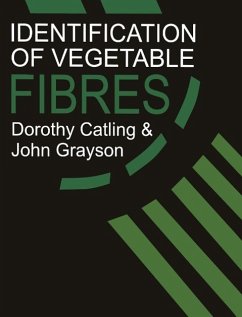It is often possible to identify fragments of plants by studying their microscopical characteristics. The recognition of a single feature very rarely establishes the plant's identity; more often, it is necessary to recognize a unique combination of characteris tics. For plant identification, the most valuable characteristics are those least likely to be affected by changes in environment; if the feature is uncommon as well as stable, it is even more useful. Good descriptions of the anatomy of plants are invaluable. For example, The Identifi cation of Hardwoods (Brazier and Franklin, 1961), together with its punched card key, is an excellent book which is useful in practice. Characters describing the sc1erenchyma account for only three places in this key. Using only these characters, it would be impossible to identify a timber. Is it possible then, to identify a species given only sc1erenchyma in the form of a commercial fibre? If it is possible, it is not easy. Although, for many purposes, plant fibres are being replaced by man-made fibres, vegetable fibres are still used, particularly in sacking and cordage and in some indus trial materials. Articles which must be examined in a forensic science laboratory are not always of recent manufacture and archaeologists and historians are interested in older materials. Therefore, it is still necessary for many workers to identify the plant species from which fibres have been extracted.
Dieser Download kann aus rechtlichen Gründen nur mit Rechnungsadresse in A, B, BG, CY, CZ, D, DK, EW, E, FIN, F, GR, HR, H, IRL, I, LT, L, LR, M, NL, PL, P, R, S, SLO, SK ausgeliefert werden.


